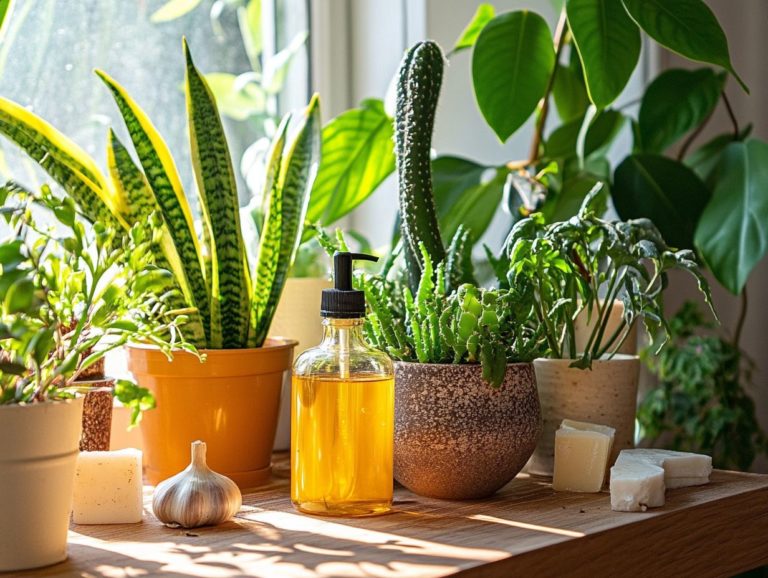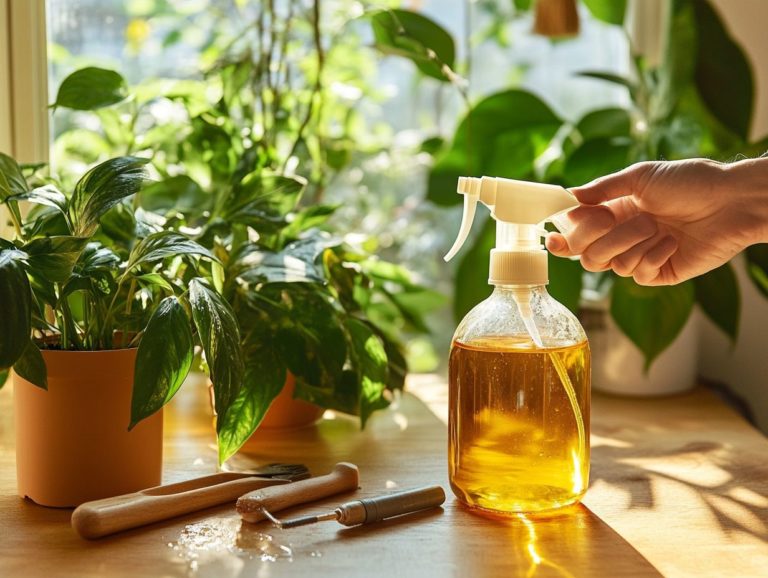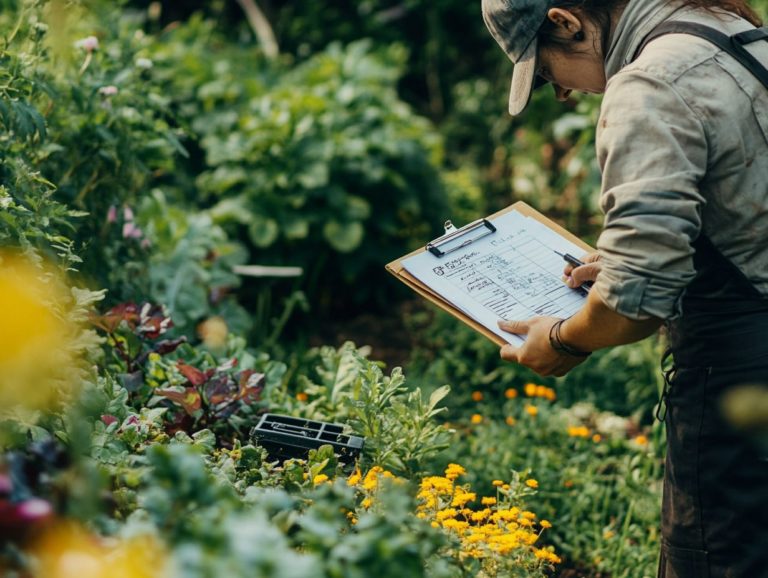How to Identify and Treat Plant Rust
Plant rust is a sneaky fungal disease that can wreak havoc on your gardens. Let s dive in to learn how to spot and fight it!
Understanding the nature of plant rust and learning to recognize its signs is essential for you as a gardener, especially when dealing with common symptoms of rust disease. This guide will empower you to identify the symptoms of rust disease and its effects on plant leaves, delve into effective treatment options, and adopt preventive measures to safeguard your precious plants.
We will also highlight specific plants that are especially susceptible to this affliction, such as Alcea rosea and various legumes. This will help you stay ahead in your gardening efforts.
Contents
Key Takeaways:
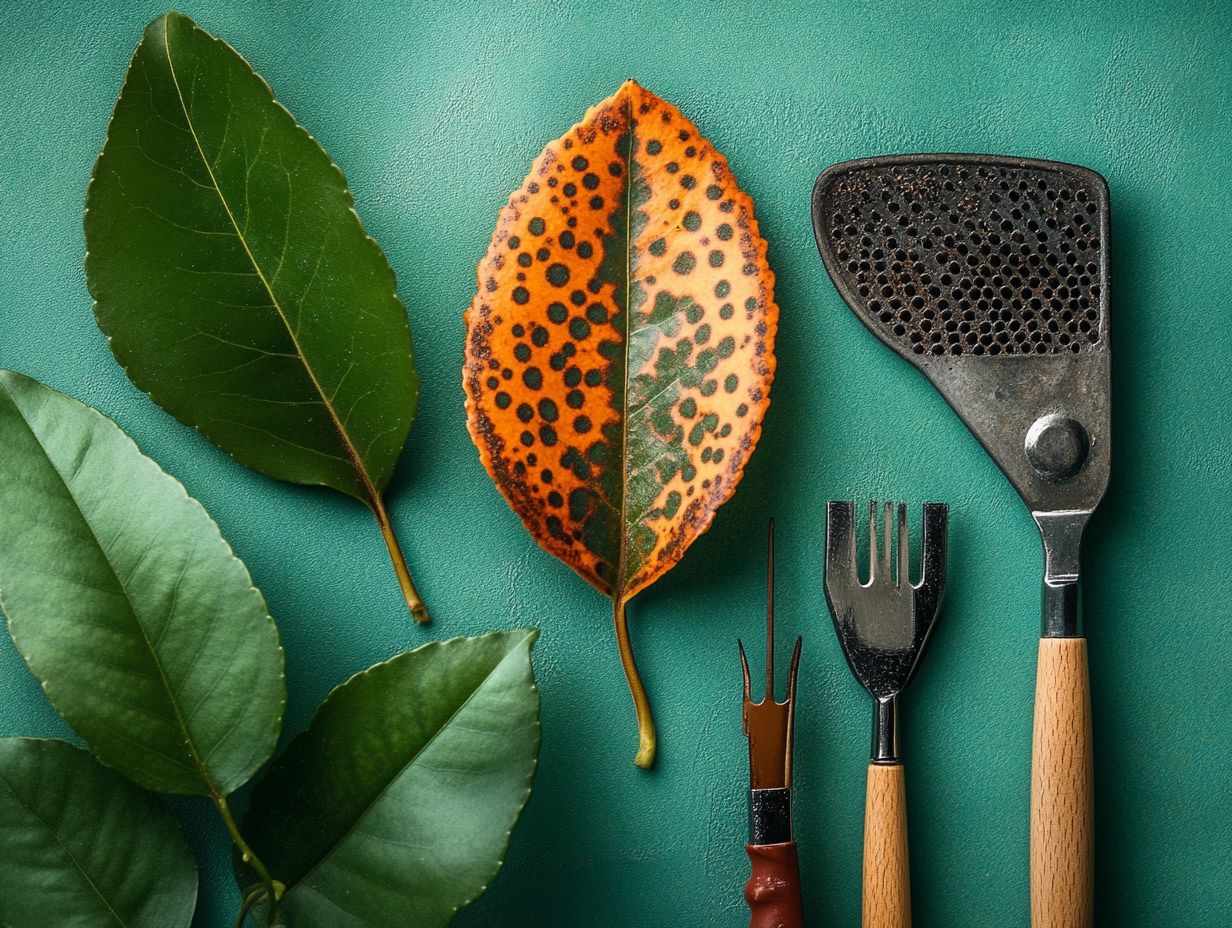
- Plant rust is a fungal disease that affects many different types of plants, causing rust-colored spots and patches on leaves and stems.
- To identify plant rust, look for visible signs such as rust-colored spots, pustules, and lesions on leaves and stems, and pay attention to symptoms like stunted growth and wilting.
- Treating plant rust involves removing affected plant parts, using fungicides, and improving cultural practices like proper watering and ventilation. Prevention is also key in managing this disease.
Understanding Plant Rust
Understanding plant rust is crucial for any gardener or horticulturist, as it s a common challenge that can impact a wide range of plants, especially in garden beds. This fungal disease, primarily caused by rust fungi a type of fungus that causes rust on plants reveals itself through those unsightly rust-colored spots on plant leaves.
Being able to identify, treat, and prevent rust disease is vital for nurturing healthy plants and fostering a thriving garden ecosystem.
What is Plant Rust?
Plant rust refers to a collection of fungal diseases caused by harmful fungi that cause rust, which can infect various parts of plants. This infection leads to visible damage and can significantly compromise plant health.
Among these rust fungi, you’ll find several types, including the notorious Puccinia species, which have a particular affinity for a wide range of hosts from staple cereal crops like wheat to decorative ornamental plants. The infection process typically begins when spores find their way onto a suitable host, where they penetrate the plant’s tissues and establish colonies that disrupt normal physiological functions.
The consequences of rust disease can be quite severe, presenting as yellow or reddish-brown pustules, leaf drop, and stunted growth, all of which can undermine the plant’s overall vitality. If these pathogens are not addressed, they can result in significant yield losses in agricultural settings and diminish the aesthetic appeal of ornamental species, creating considerable challenges for both gardeners and farmers.
Identifying Plant Rust
Identifying plant rust is essential for effective management; by recognizing the common symptoms early on, you can protect your garden from widespread infection. Rust disease usually presents itself as small, orange or brown pustules on the undersides of plant leaves.
If neglected, this can lead to several problems, including wilting, yellowing, and premature leaf drop. Taking proactive steps to spot these signs, including checking the soil level and ensuring adequate air circulation, can make all the difference in maintaining the health of your garden.
Don’t wait until it’s too late! Learn how to protect your plants from rust today.
Signs and Symptoms
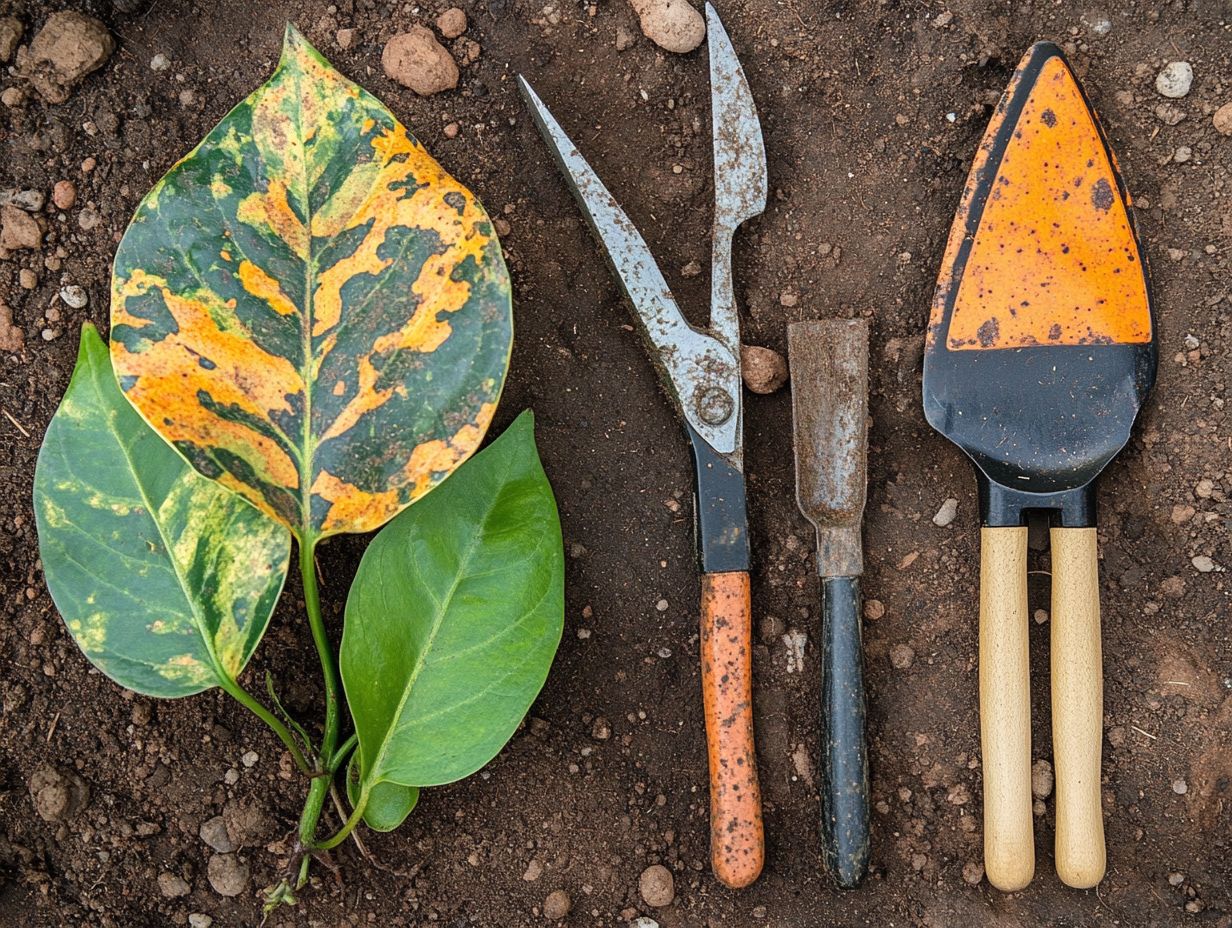
Signs of rust disease vary by plant species. You ll often notice rust-colored spots on the upper surfaces of leaves and small, powdery spots on the undersides.
In addition to these visible signs, you might see significant leaf curling, distorted shapes, stunted growth, and even premature leaf drop. These symptoms primarily affect younger leaves and can spread to stems and flowers, leading to more damage. For instance, legumes often show yellowing foliage alongside rust spots, indicating a serious infection.
As the disease progresses, the risk of secondary infections like fungi or bacteria that target weakened plants increases. This can seriously harm your plants’ health, so act swiftly! Staying informed and proactive is essential for effective plant care.
Treating Plant Rust
Treating plant rust effectively can be a game-changer! It requires a thoughtful mix of organic methods and substances used to kill fungi, tailored to meet the needs of your infected plants.
Integrating home remedies and biological control options with commercial fungicides helps manage this persistent issue. This approach promotes healthier plants and enhances the vitality of your garden.
Effective Treatment Methods
Effective treatment methods for rust disease include both organic options, like using botanical fungicides such as Serenade Garden, and commercial ones like Chlorothalonil, Mancozeb, and Trifloxystrobin.
These options provide a diverse toolkit to counter rust’s harmful effects on various crops. For example, apply Serenade Garden at about 2-3 ounces per gallon of water during the early stages of infection for maximum protection. Conversely, Chlorothalonil, a well-known commercial choice, typically suggests a rate of 1.5 to 3 pints per acre for broad-spectrum control.
While organic methods support environmental sustainability, they often yield slower results compared to the quick impact of commercial fungicides. However, timing your applications is vital; early intervention can significantly enhance the success of either method.
Preventing Plant Rust
Preventing plant rust is much more effective than treating it! You can implement a range of straightforward measures in your garden.
Ensure adequate air circulation, manage water levels wisely, and choose rust-resistant varieties to significantly reduce the chances of rust disease affecting your thriving plants.
Preventive Measures and Tips

To effectively prevent rust disease, prioritize good air circulation and manage water levels in your garden these are essential practices every gardener should adopt.
Additionally, ensure appropriate spacing between your plants. This allows them to receive adequate sunlight and promotes healthy airflow, reducing humidity in crowded areas and lowering the risk of rust spore development.
Pruning is also important; it enhances light penetration and alleviates overcrowding, both of which can trap moisture and increase infection risk.
Watering early in the day minimizes excessive moisture on foliage overnight, thereby lowering rust chances. Choose rust-resistant plant varieties to bolster your defenses against this disease, providing an extra layer of protection and encouraging vigorous growth in your garden.
Common Plants Affected by Rust
Several common plants, such as Alcea rosea and various legumes, are often susceptible to rust disease. This highlights the importance of remaining vigilant to maintain your garden’s health.
Rust disease can significantly compromise the vitality of these plants, resulting in reduced yields and unsightly damage. Stay alert to its signs to help maintain a flourishing garden.
Monitor your plants closely and seek professional advice if needed!
Identifying and Treating Rust on Different Plants
Identifying and treating rust disease on various plants requires a tailored approach that considers the specific type of plant, such as vegetables or ornamental flowers, and the severity of the infection.
Observe the symptoms closely, as different species present unique signs of rust, such as yellow or orange spots on their leaves. Seasonal factors and local climate conditions are crucial; they can either worsen or ease these infections. The overall health of your plants plays a significant role in their vulnerability to rust disease. For example, if you encounter powdery mildew, identifying and treating powdery mildew promptly can help. Well-nourished specimens tend to fend off fungal attacks more effectively than stressed plants.
In terms of treatment, methods will differ. You might choose organic fungicides for ornamental flowers or specific treatments for crops. Utilizing local gardening resources and understanding companion planting can enhance your prevention and mitigation efforts, allowing for a comprehensive strategy to tackle rust across various plants.
Frequently Asked Questions
What is plant rust and how can I identify it?
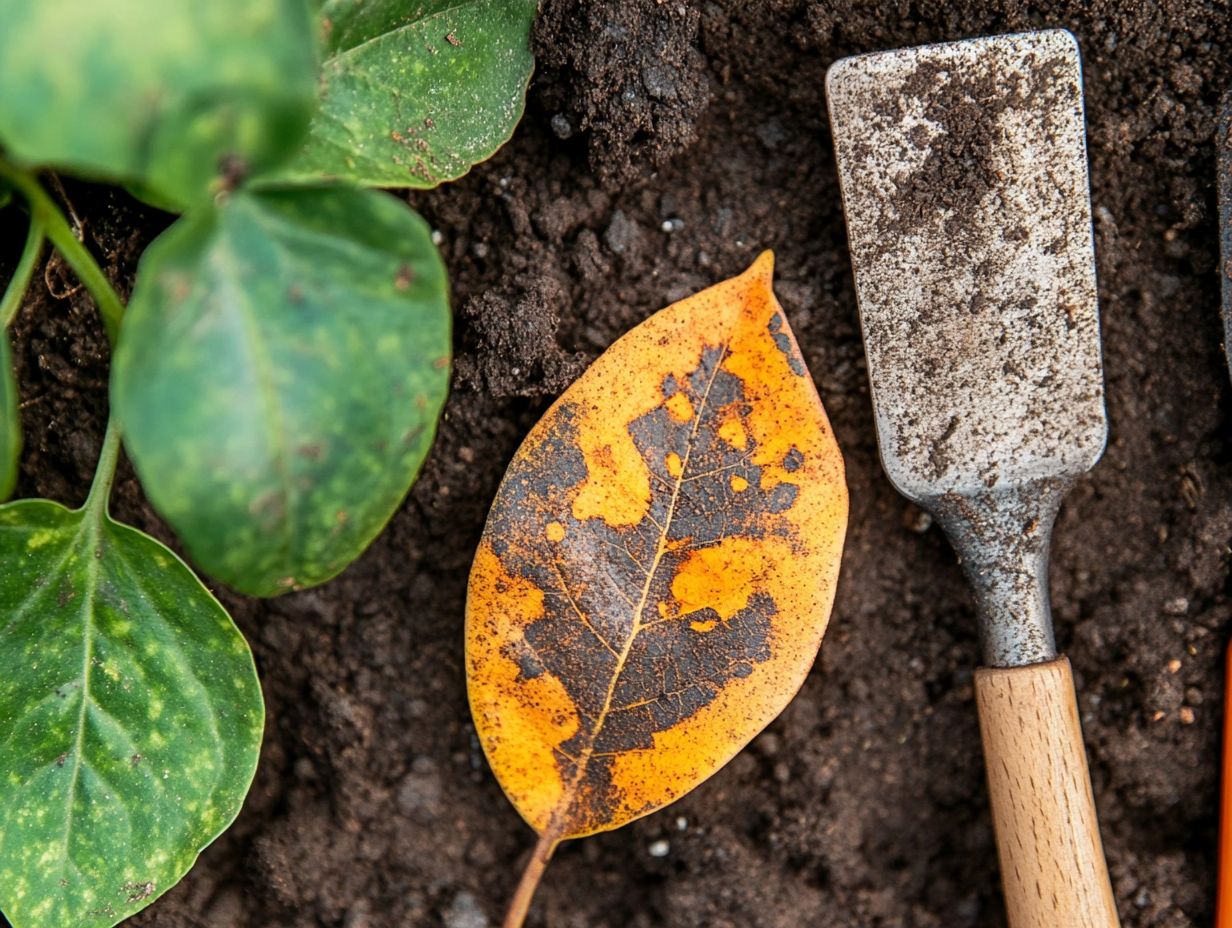
Plant rust is a fungal disease that affects a variety of plants, including flowers, vegetables, and trees. It appears as orange, yellow, or brown spots on the leaves and stems of plants. You can identify it by its distinct rust-like color and texture.
What causes plant rust and how can I prevent it?
Plant rust is caused by a fungus that thrives in warm, humid weather. It can spread through spores carried by wind, water, and insects. To prevent plant rust, properly space your plants, water them in the morning, and remove any infected leaves or plants immediately.
Can I treat plant rust without using chemicals?
Yes! There are several natural and organic methods to treat plant rust. These include using neem oil, garlic spray, or a mixture of baking soda and water. These remedies help control the spread of the fungus and prevent further damage to your plants.
What should I do if my plants are already infected with rust?
If your plants show signs of rust, act quickly to save them! Remove any infected leaves or plants and dispose of them properly. You can also apply a fungicide specifically designed to treat plant rust. Follow the instructions carefully and continue to monitor your plants for any new signs of rust.
Can plant rust be contagious to other plants?
Yes! Plant rust can easily spread to other plants. This is why it is crucial to remove any infected plants or leaves and take preventive measures to stop the spread of the fungus. Properly clean and sterilize any gardening tools that have come in contact with infected plants.
Is plant rust harmful to humans?
Plant rust is not harmful to humans, but it can cause allergic reactions in some individuals. It’s best to wear gloves when handling infected plants and wash your hands thoroughly afterward. If you experience any skin irritation or respiratory issues, consult a doctor immediately.
Have you dealt with plant rust before? Share your experiences or tips in the comments below!


